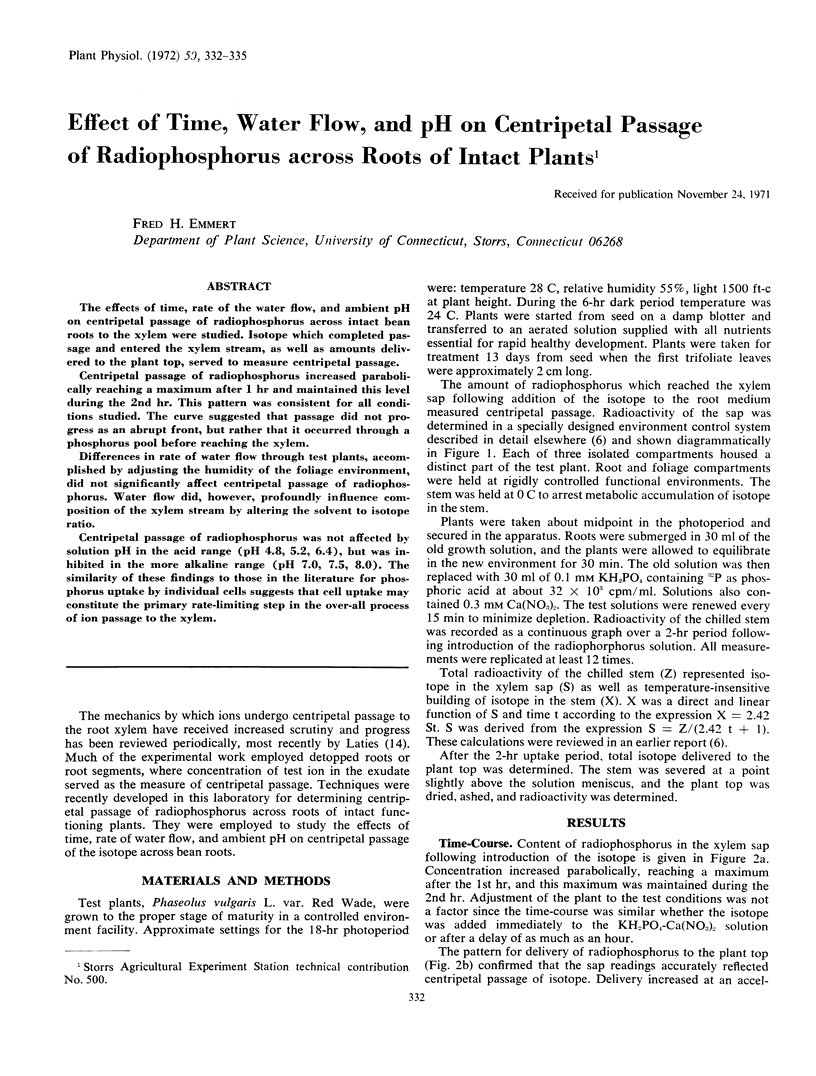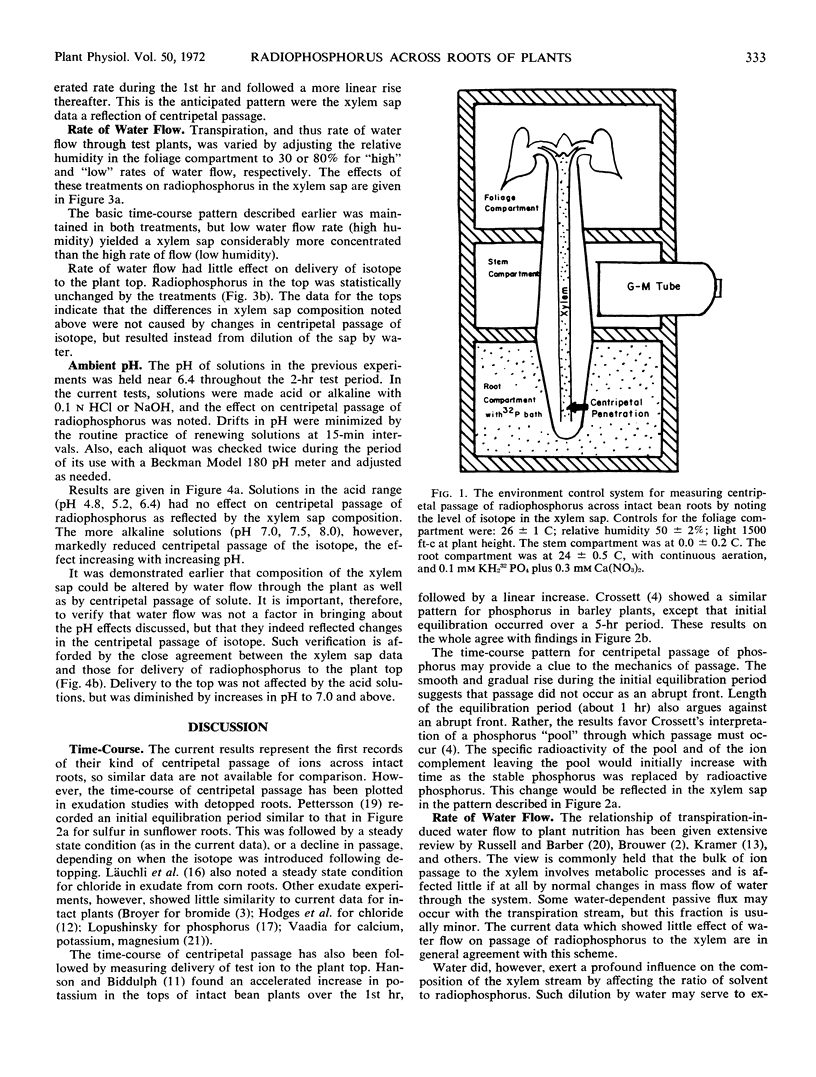Abstract
The effects of time, rate of the water flow, and ambient pH on centripetal passage of radiophosphorus across intact bean roots to the xylem were studied. Isotope which completed passage and entered the xylem stream, as well as amounts delivered to the plant top, served to measure centripetal passage.
Centripetal passage of radiophosphorus increased parabolically reaching a maximum after 1 hr and maintained this level during the 2nd hr. This pattern was consistent for all conditions studied. The curve suggested that passage did not progress as an abrupt front, but rather that it occurred through a phosphorus pool before reaching the xylem.
Differences in rate of water flow through test plants, accomplished by adjusting the humidity of the foliage environment, did not significantly affect centripetal passage of radiophosphorus. Water flow did, however, profoundly influence composition of the xylem stream by altering the solvent to isotope ratio.
Centripetal passage of radiophosphorus was not affected by solution pH in the acid range (pH 4.8, 5.2, 6.4), but was inhibited in the more alkaline range (pH 7.0, 7.5, 8.0). The similarity of these findings to those in the literature for phosphorus uptake by individual cells suggests that cell uptake may constitute the primary rate-limiting step in the over-all process of ion passage to the xylem.
Full text
PDF



Selected References
These references are in PubMed. This may not be the complete list of references from this article.
- Broyer T. C. FURTHER OBSERVATIONS ON THE ABSORPTION AND TRANSLOCATION OF INORGANIC SOLUTES USING RADIOACTIVE ISOTOPES WITH PLANTS. Plant Physiol. 1950 Jul;25(3):367–376. doi: 10.1104/pp.25.3.367. [DOI] [PMC free article] [PubMed] [Google Scholar]
- Emmert F. H. A system for measuring penetration of radioactive ions across roots of intact plants. Plant Physiol. 1966 Feb;41(2):244–247. doi: 10.1104/pp.41.2.244. [DOI] [PMC free article] [PubMed] [Google Scholar]
- Franklin R. E. Effect of adsorbed cations on phosphorus uptake by excised roots. Plant Physiol. 1969 May;44(5):697–700. doi: 10.1104/pp.44.5.697. [DOI] [PMC free article] [PubMed] [Google Scholar]
- Hagen C. E., Hopkins H. T. Ionic Species in Orthophosphate Absorption by Barley Roots. Plant Physiol. 1955 May;30(3):193–199. doi: 10.1104/pp.30.3.193. [DOI] [PMC free article] [PubMed] [Google Scholar]
- Hagen C. E., Leggett J. E., Jackson P. C. THE SITES OF ORTHOPHOSPHATE UPTAKE BY BARLEY ROOTS. Proc Natl Acad Sci U S A. 1957 Jun 15;43(6):496–506. doi: 10.1073/pnas.43.6.496. [DOI] [PMC free article] [PubMed] [Google Scholar]
- Hanson J. B., Biddulph O. The Diurnal Variation in the Translocation of Minerals across Bean Roots. Plant Physiol. 1953 Jul;28(3):356–370. doi: 10.1104/pp.28.3.356. [DOI] [PMC free article] [PubMed] [Google Scholar]
- Hodges T. K., Vaadia Y. Uptake and Transport of Radiochloride and Tritiated Water by Various Zones of Onion Roots of Different Chloride Status. Plant Physiol. 1964 Jan;39(1):104–108. doi: 10.1104/pp.39.1.104. [DOI] [PMC free article] [PubMed] [Google Scholar]
- Läuchli A., Epstein E. Lateral transport of ions into the xylem of corn roots: I. Kinetics and energetics. Plant Physiol. 1971 Aug;48(2):111–117. doi: 10.1104/pp.48.2.111. [DOI] [PMC free article] [PubMed] [Google Scholar]
- Läuchli A., Spurr A. R., Epstein E. Lateral Transport of Ions into the Xylem of Corn Roots: II. Evaluation of a Stelar Pump. Plant Physiol. 1971 Aug;48(2):118–124. doi: 10.1104/pp.48.2.118. [DOI] [PMC free article] [PubMed] [Google Scholar]


